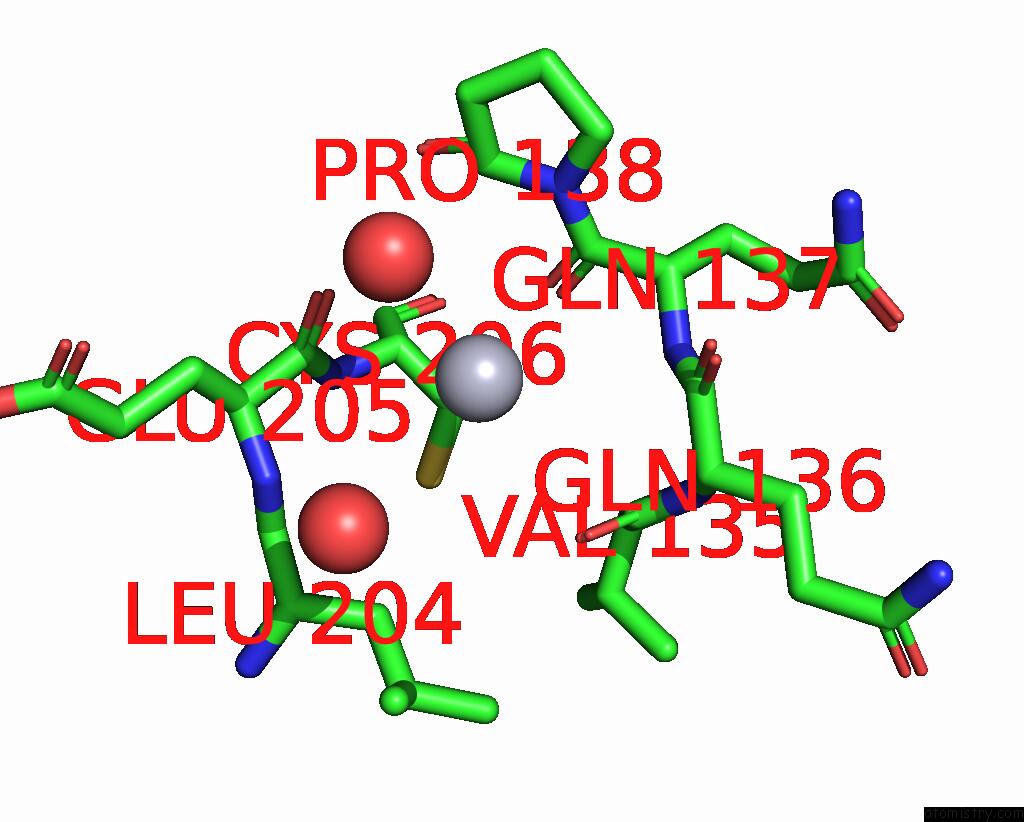Mercury »
PDB 4q81-5c9l »
5bnl »
Mercury in PDB 5bnl: Deciphering the Mechanism of Carbonic Anhydrase Inhibition with Coumarins and Thiocoumarins
Enzymatic activity of Deciphering the Mechanism of Carbonic Anhydrase Inhibition with Coumarins and Thiocoumarins
All present enzymatic activity of Deciphering the Mechanism of Carbonic Anhydrase Inhibition with Coumarins and Thiocoumarins:
4.2.1.1;
4.2.1.1;
Protein crystallography data
The structure of Deciphering the Mechanism of Carbonic Anhydrase Inhibition with Coumarins and Thiocoumarins, PDB code: 5bnl
was solved by
C.Temperini,
A.Maresca,
L.Pochet,
B.Masereel,
A.Scozzafava,
C.T.Supuran,
with X-Ray Crystallography technique. A brief refinement statistics is given in the table below:
| Resolution Low / High (Å) | 20.00 / 2.00 |
| Space group | P 1 21 1 |
| Cell size a, b, c (Å), α, β, γ (°) | 42.230, 41.500, 72.420, 90.00, 104.50, 90.00 |
| R / Rfree (%) | 22.3 / 29.3 |
Other elements in 5bnl:
The structure of Deciphering the Mechanism of Carbonic Anhydrase Inhibition with Coumarins and Thiocoumarins also contains other interesting chemical elements:
| Zinc | (Zn) | 1 atom |
Mercury Binding Sites:
The binding sites of Mercury atom in the Deciphering the Mechanism of Carbonic Anhydrase Inhibition with Coumarins and Thiocoumarins
(pdb code 5bnl). This binding sites where shown within
5.0 Angstroms radius around Mercury atom.
In total only one binding site of Mercury was determined in the Deciphering the Mechanism of Carbonic Anhydrase Inhibition with Coumarins and Thiocoumarins, PDB code: 5bnl:
In total only one binding site of Mercury was determined in the Deciphering the Mechanism of Carbonic Anhydrase Inhibition with Coumarins and Thiocoumarins, PDB code: 5bnl:
Mercury binding site 1 out of 1 in 5bnl
Go back to
Mercury binding site 1 out
of 1 in the Deciphering the Mechanism of Carbonic Anhydrase Inhibition with Coumarins and Thiocoumarins

Mono view

Stereo pair view

Mono view

Stereo pair view
A full contact list of Mercury with other atoms in the Hg binding
site number 1 of Deciphering the Mechanism of Carbonic Anhydrase Inhibition with Coumarins and Thiocoumarins within 5.0Å range:
|
Reference:
A.Maresca,
C.Temperini,
L.Pochet,
B.Masereel,
A.Scozzafava,
C.T.Supuran.
Deciphering the Mechanism of Carbonic Anhydrase Inhibition with Coumarins and Thiocoumarins. J.Med.Chem. V. 53 335 2010.
ISSN: ISSN 0022-2623
PubMed: 19911821
DOI: 10.1021/JM901287J
Page generated: Sun Aug 11 05:39:48 2024
ISSN: ISSN 0022-2623
PubMed: 19911821
DOI: 10.1021/JM901287J
Last articles
Fe in 2YXOFe in 2YRS
Fe in 2YXC
Fe in 2YNM
Fe in 2YVJ
Fe in 2YP1
Fe in 2YU2
Fe in 2YU1
Fe in 2YQB
Fe in 2YOO